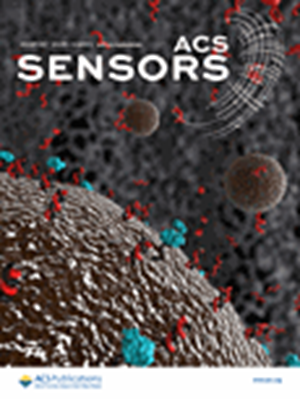Y-Shaped Deoxyribonucleic Acid Scaffold Pendulums: A One-Step Electrochemical Sensor
IF 9.1
1区 化学
Q1 CHEMISTRY, ANALYTICAL
引用次数: 0
Abstract
The challenge of developing sensing platforms for the direct monitoring of targets within complex samples is well-recognized. To address this, a one-step electrochemical sensing detection platform was introduced, featuring an innovative Y-shaped DNA molecular pendulum design. The approach deviated from the conventional molecular pendulum mode by employing a split aptamer instead of a full one, thereby enabling the detection of small molecules and low-molecular-weight proteins. Three Y-shaped DNA molecular pendulum configurations were designed: the single-arm, the flexible double-arm, and the stable double-arm Y-shaped DNA molecular pendulum. The results revealed that the Y-shaped scaffold pendulum with a stable two-armed structure not only offered a broader detection range for target concentrations but also produced a more substantial electrical signal enhancement compared to other modes. This enhanced performance is attributed to the stable conformation of this design, which prolongs the time the probe takes to overcome fluid resistance and reach the electrode surface, leading to a more significant alteration in the electrical signal. The sensor can be utilized for one-step detection of enrofloxacin (ENR) in diluted samples (milk, artificial urine, and cosmetics), and its detection range (0.001–100 ng/mL) is fully compliant with the EU maximum residue levels (100 ng/mL) for ENR in milk. Additionally, the sensor can detect myoglobin (Myo) in artificial urine and serum by simply changing the recognized DNA strand. This work provided a simple, expandable idea for the detection of small molecules and low-molecular-weight proteins.

y形脱氧核糖核酸支架摆:一步电化学传感器
开发用于直接监测复杂样品中目标的传感平台的挑战是众所周知的。为了解决这一问题,介绍了一种一步电化学传感检测平台,该平台具有创新的y形DNA分子摆设计。该方法与传统的分子摆模式不同,采用了一个分裂的适体而不是一个完整的适体,从而能够检测小分子和低分子量蛋白质。设计了三种y型DNA分子摆构型:单臂、柔性双臂和稳定双臂y型DNA分子摆。结果表明,与其他模式相比,具有稳定双臂结构的y形支架摆不仅可以提供更广泛的目标浓度检测范围,而且可以产生更明显的电信号增强。这种增强的性能归功于这种设计的稳定构象,它延长了探头克服流体阻力并到达电极表面所需的时间,从而导致电信号发生更大的变化。该传感器可用于稀释样品(牛奶、人工尿液、化妆品)中恩诺沙星(ENR)的一步检测,其检测范围(0.001 ~ 100 ng/mL)完全符合欧盟对牛奶中ENR的最大残留限量(100 ng/mL)。此外,传感器可以通过简单地改变识别的DNA链来检测人工尿液和血清中的肌红蛋白(Myo)。这项工作为小分子和低分子量蛋白质的检测提供了一个简单、可扩展的思路。
本文章由计算机程序翻译,如有差异,请以英文原文为准。
求助全文
约1分钟内获得全文
求助全文
来源期刊

ACS Sensors
Chemical Engineering-Bioengineering
CiteScore
14.50
自引率
3.40%
发文量
372
期刊介绍:
ACS Sensors is a peer-reviewed research journal that focuses on the dissemination of new and original knowledge in the field of sensor science, particularly those that selectively sense chemical or biological species or processes. The journal covers a broad range of topics, including but not limited to biosensors, chemical sensors, gas sensors, intracellular sensors, single molecule sensors, cell chips, and microfluidic devices. It aims to publish articles that address conceptual advances in sensing technology applicable to various types of analytes or application papers that report on the use of existing sensing concepts in new ways or for new analytes.
 求助内容:
求助内容: 应助结果提醒方式:
应助结果提醒方式:


